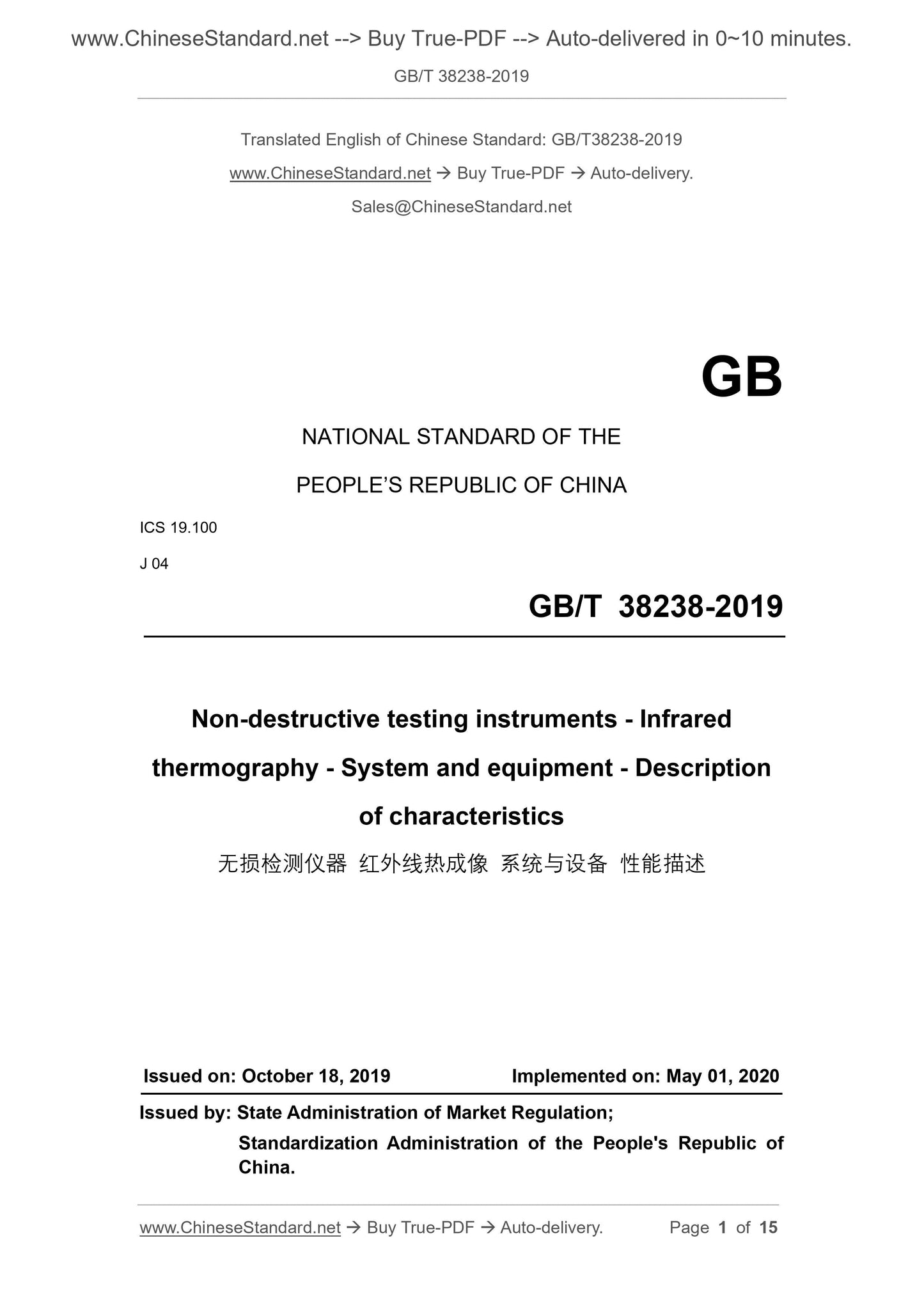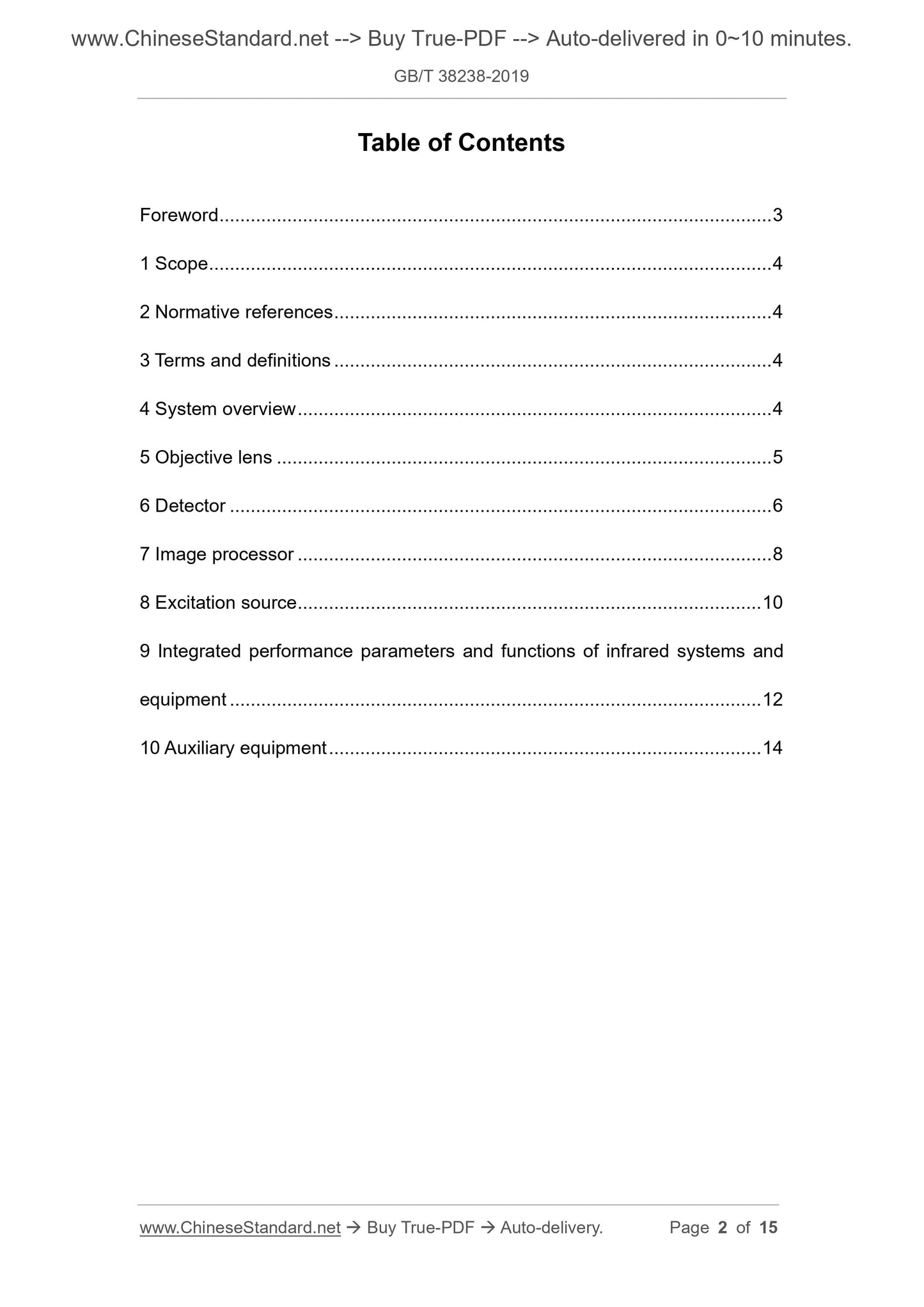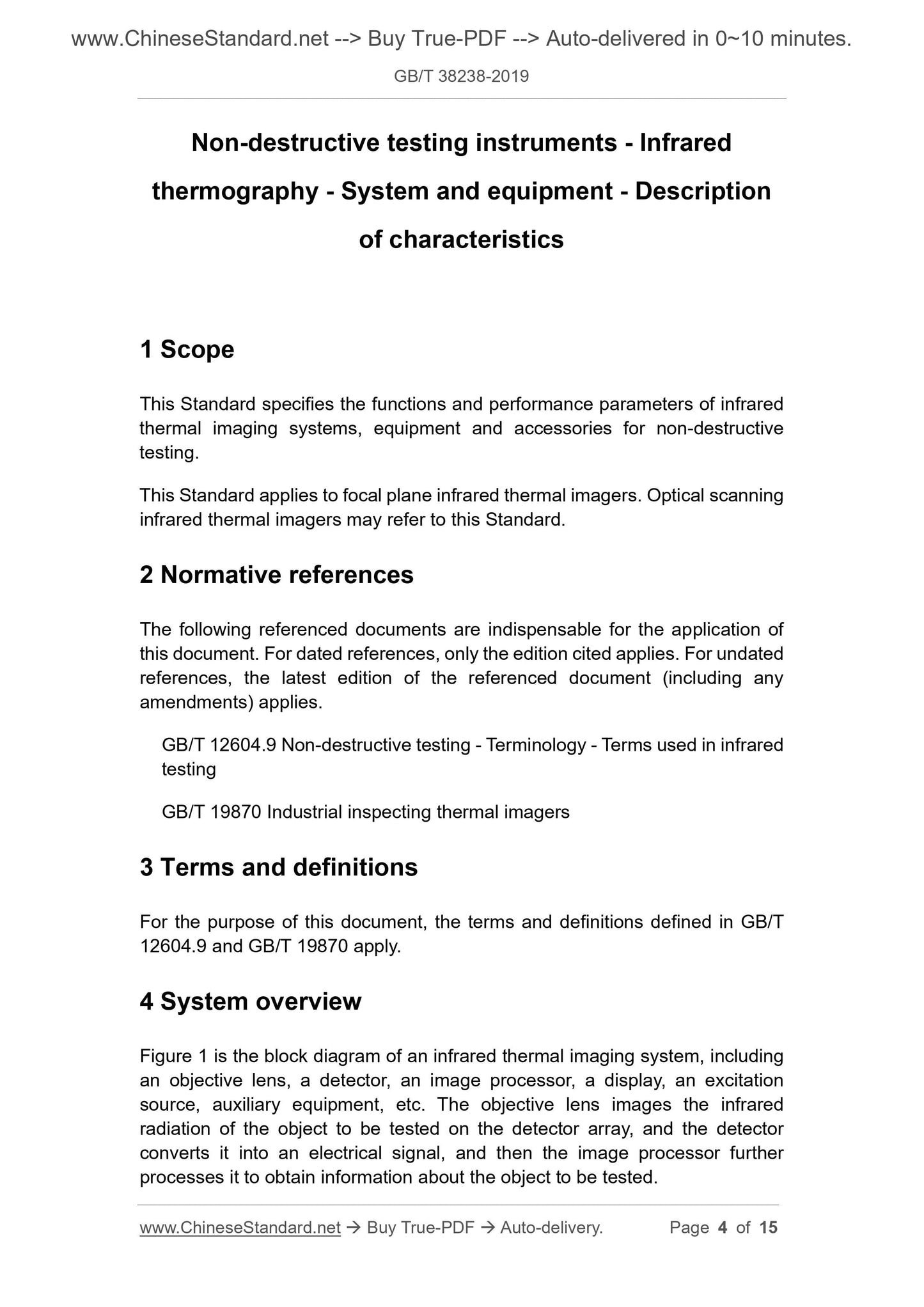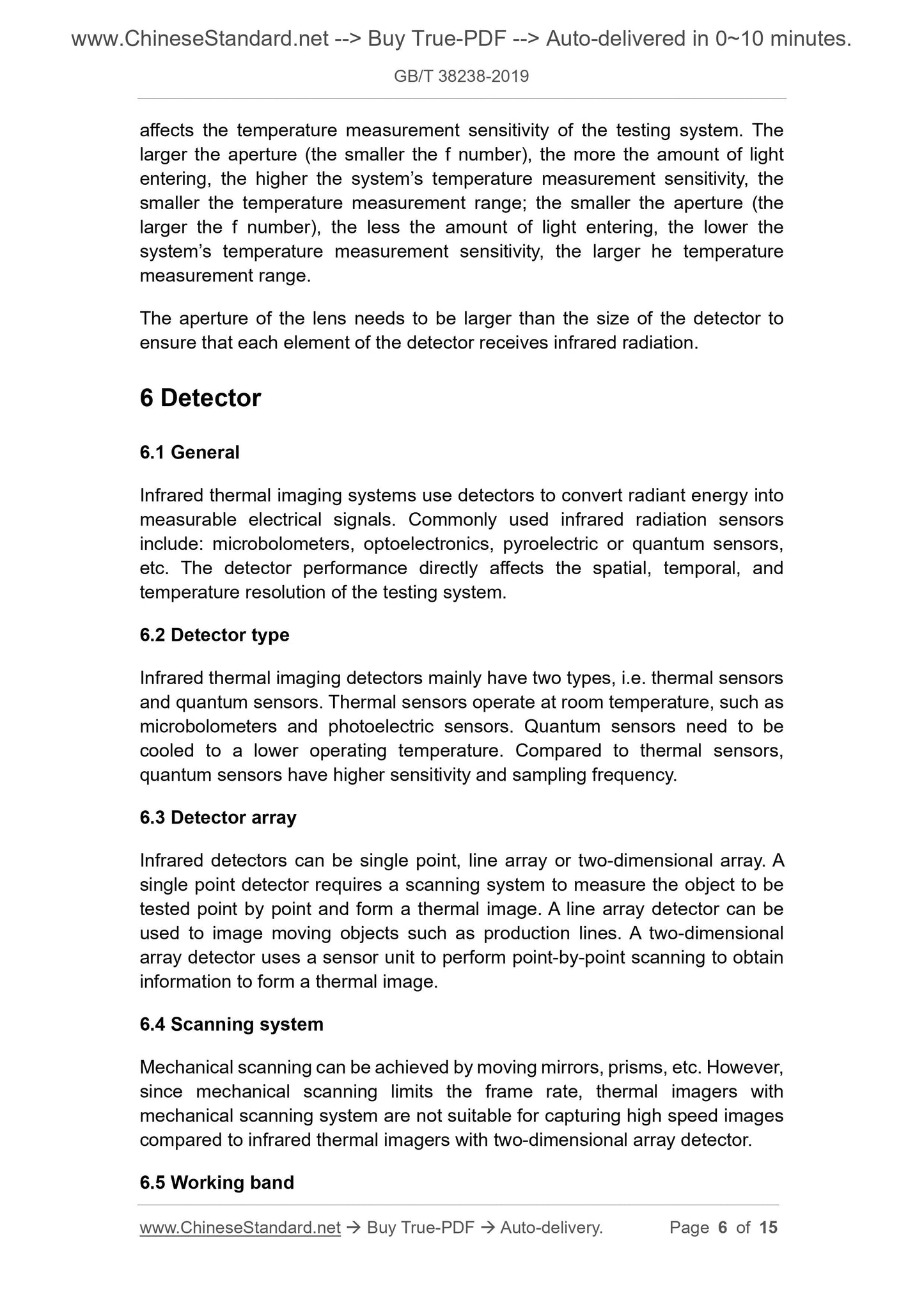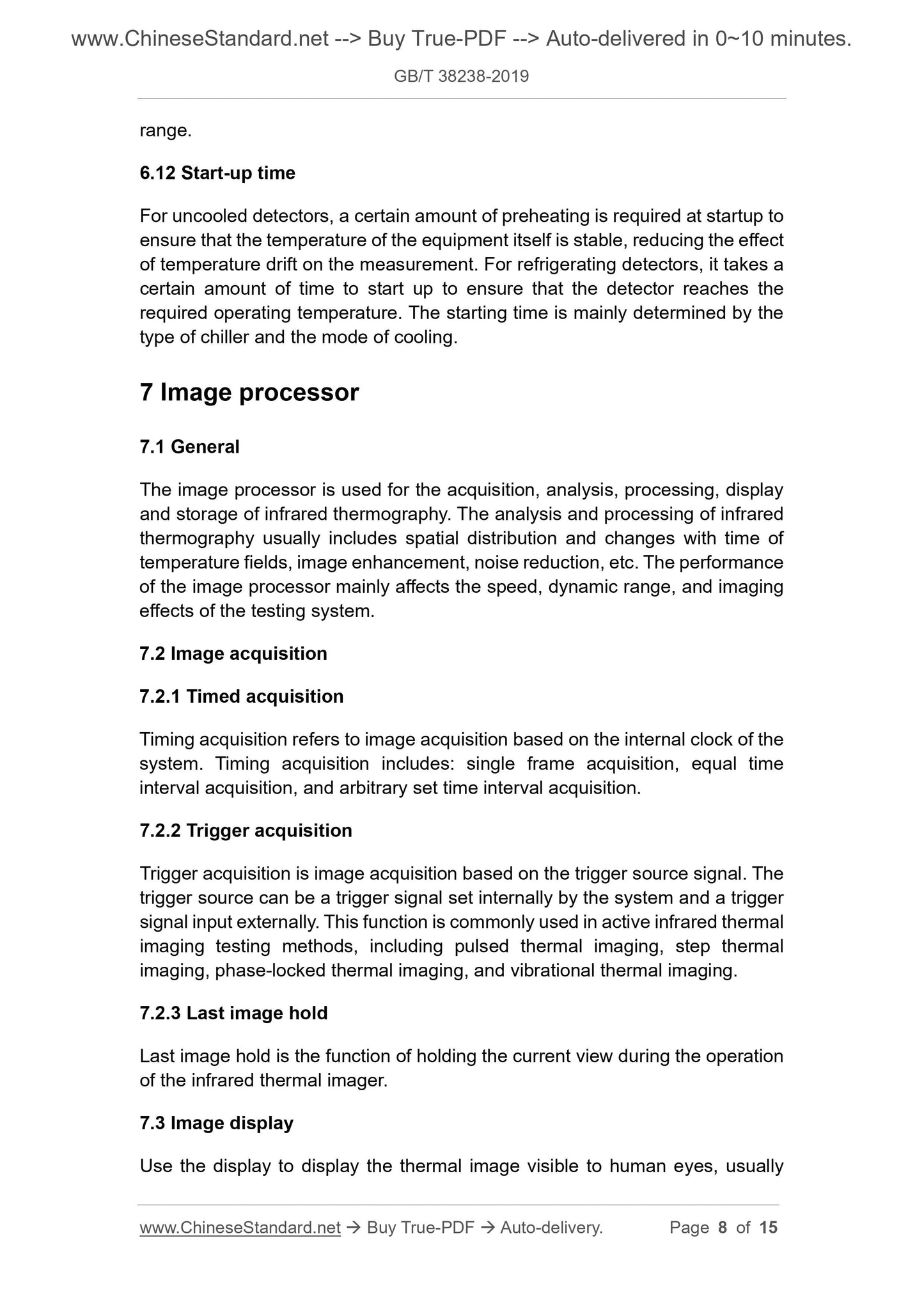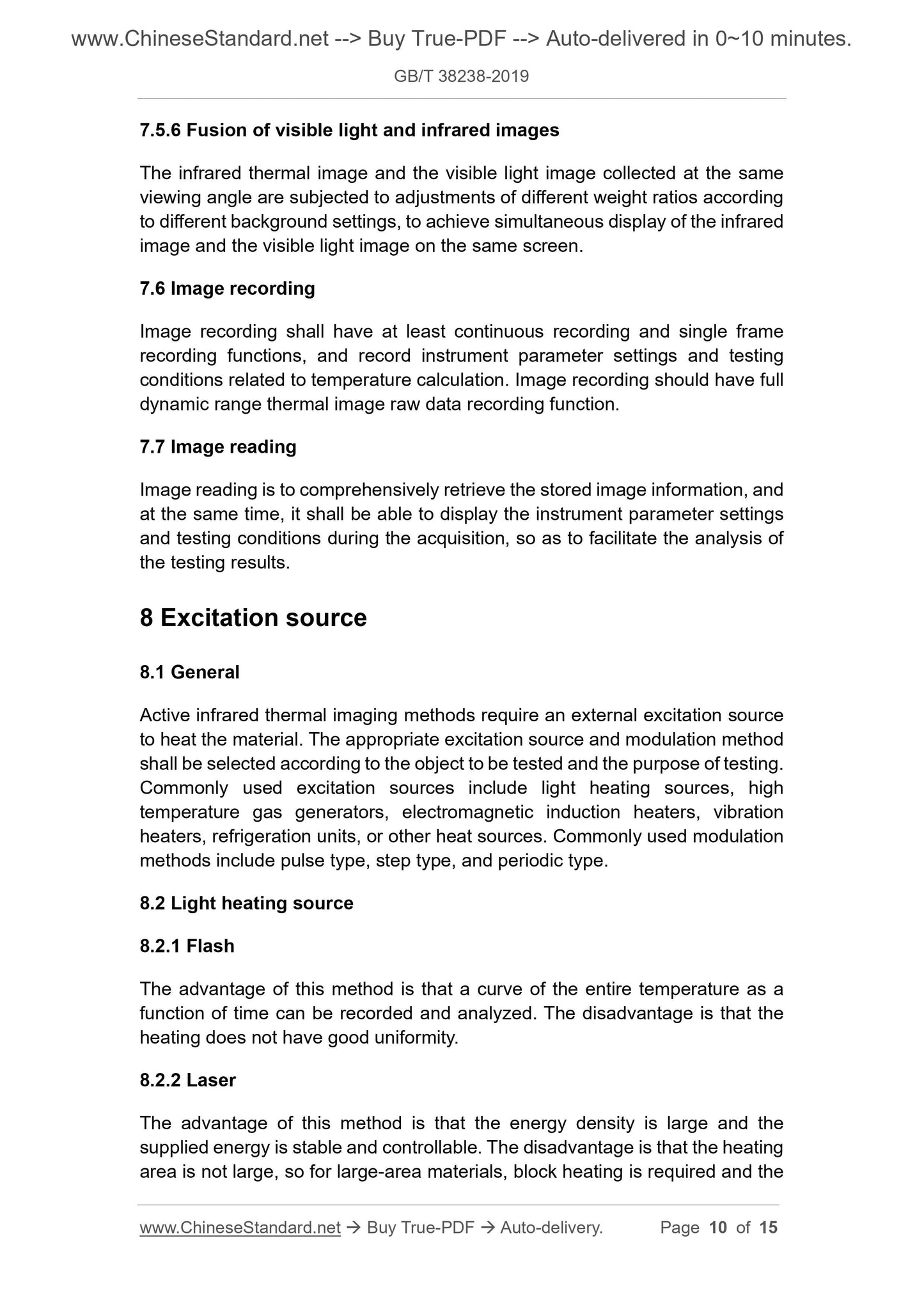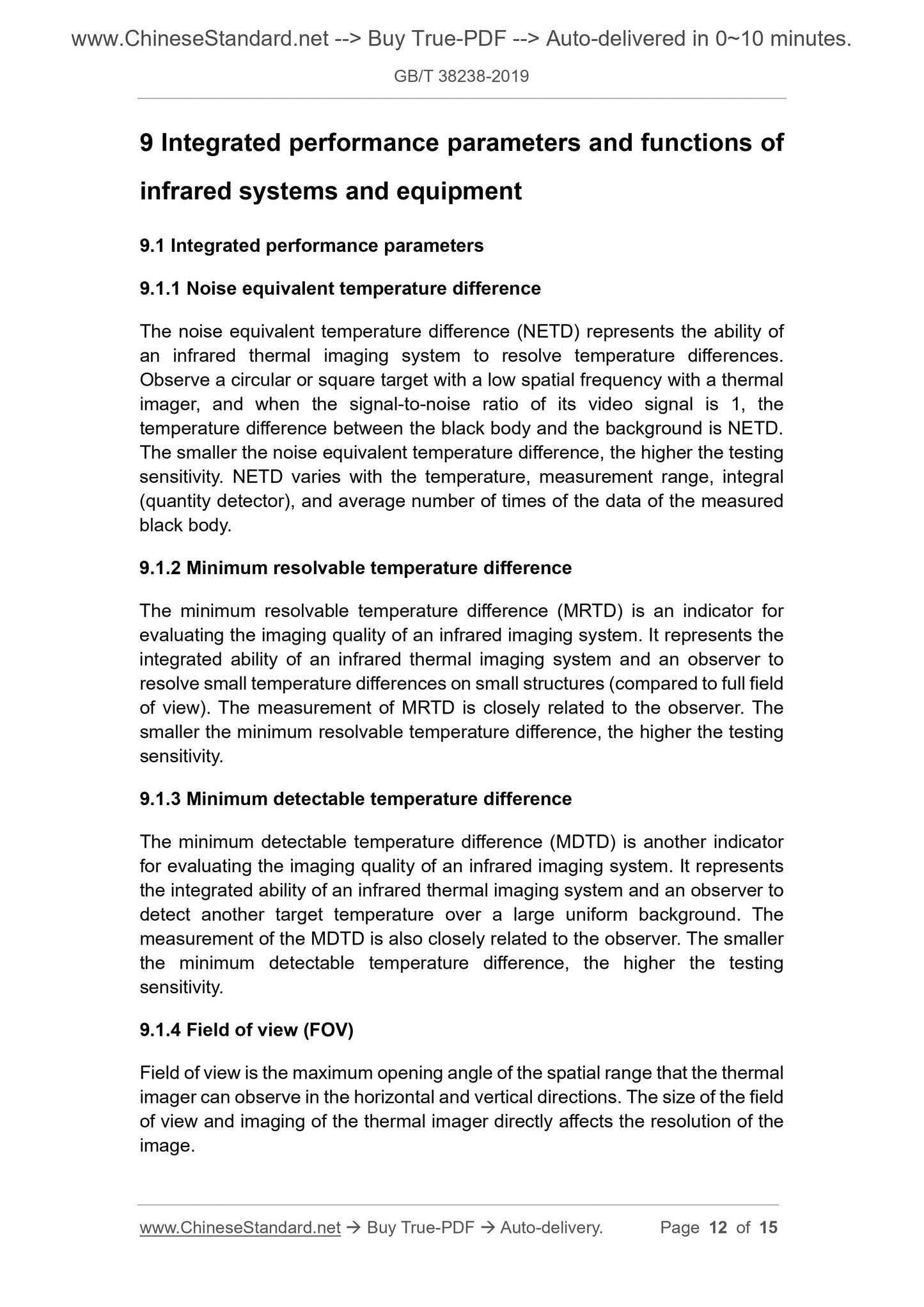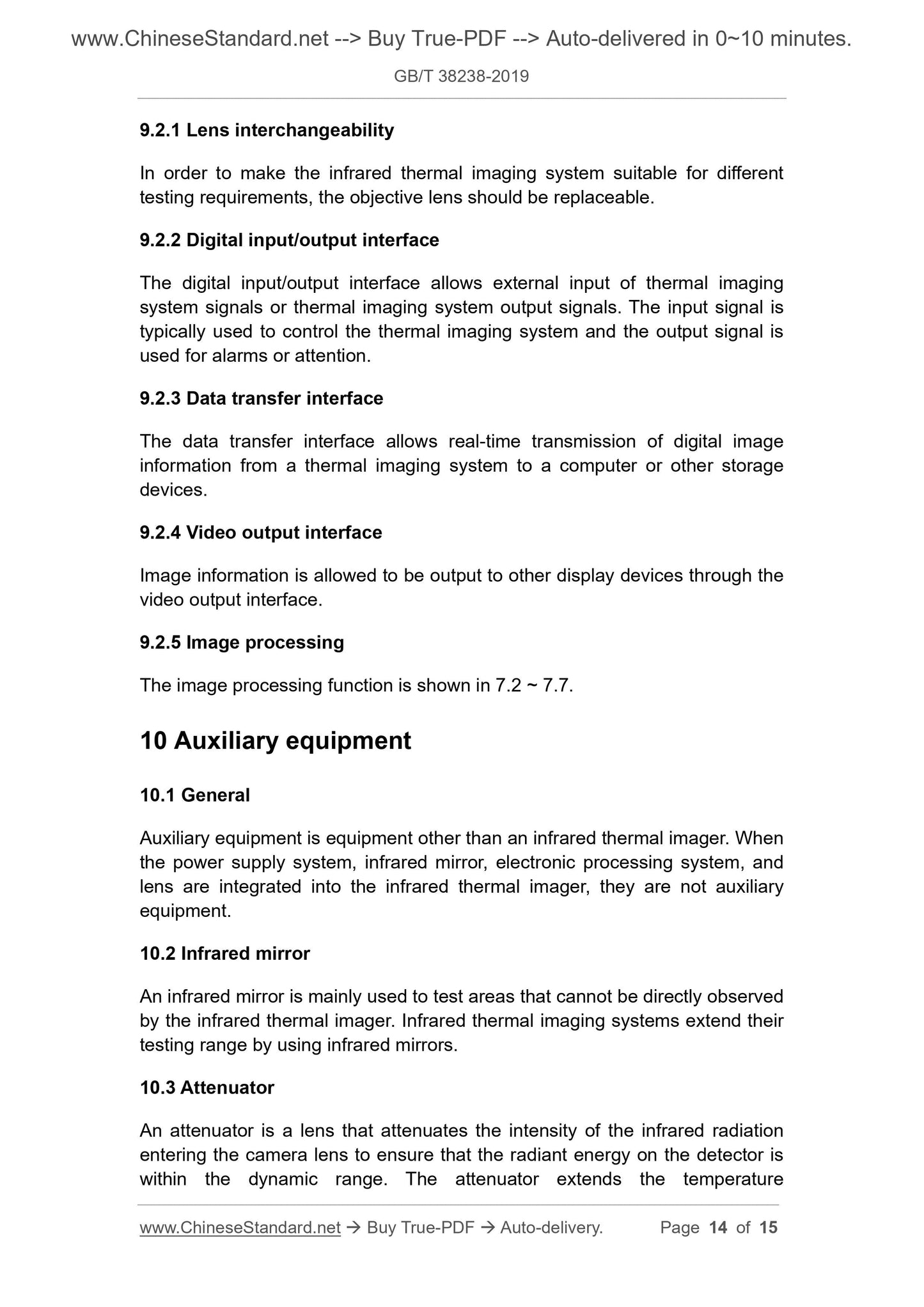1
/
of
8
www.ChineseStandard.us -- Field Test Asia Pte. Ltd.
GB/T 38238-2019 English PDF (GB/T38238-2019)
GB/T 38238-2019 English PDF (GB/T38238-2019)
Regular price
$180.00
Regular price
Sale price
$180.00
Unit price
/
per
Shipping calculated at checkout.
Couldn't load pickup availability
GB/T 38238-2019: Non-destructive testing instruments - Infrared thermography - System and equipment - Description of characteristics
Delivery: 9 seconds. Download (and Email) true-PDF + Invoice.Get Quotation: Click GB/T 38238-2019 (Self-service in 1-minute)
Newer / historical versions: GB/T 38238-2019
Preview True-PDF
Scope
This Standard specifies the functions and performance parameters of infraredthermal imaging systems, equipment and accessories for non-destructive
testing.
This Standard applies to focal plane infrared thermal imagers. Optical scanning
infrared thermal imagers may refer to this Standard.
Basic Data
| Standard ID | GB/T 38238-2019 (GB/T38238-2019) |
| Description (Translated English) | Non-destructive testing instruments - Infrared thermography - System and equipment - Description of characteristics |
| Sector / Industry | National Standard (Recommended) |
| Classification of Chinese Standard | J04 |
| Classification of International Standard | 19.100 |
| Word Count Estimation | 14,168 |
| Date of Issue | 2019-10-18 |
| Date of Implementation | 2020-05-01 |
| Issuing agency(ies) | State Administration for Market Regulation, China National Standardization Administration |
Share
